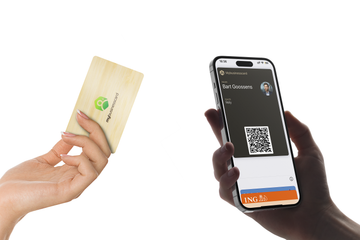What is NFC?
NFC, or Near Field Communication, is a wireless communication technology that allows devices to exchange data over short distances (usually up to 10 cm). Unlike Bluetooth, NFC has a shorter range and is more energy-efficient. It is widely used in smartphones, payment cards, access passes, and even business cards.
How does NFC work?
NFC uses electromagnetic fields to transfer data. When an NFC-enabled device, such as a smartphone, comes close to an NFC tag (e.g., a chip in a card), a connection is established. This connection allows the device to read or write data, depending on the application.
Applications of NFC in cards
1. Contactless payment
One of the most common applications of NFC is contactless payments. Many payment cards are equipped with an NFC chip, allowing users to make quick and secure payments by simply holding the card close to a payment terminal. This technology speeds up the payment process and reduces the risk of errors.
2. Access control
NFC is also used in access cards for buildings, events, or parking garages. Users simply hold the card against a reader to gain access, which speeds up the process and increases user convenience.
3. Smart business cards
With NFC-integrated business cards, professionals can easily share their contact information by simply holding the card against a smartphone. This makes sharing information faster and more efficient. We produce them!
4. Smart keychains and tags
NFC technology is also used in key fobs and tags that can be used for various purposes, such as opening doors, starting appliances, or automatically performing tasks on a smartphone.
NFC Security
NFC is considered a secure technology. Its short range makes it difficult for third parties to eavesdrop on data. Furthermore, data is often encrypted, and unique transaction numbers can be generated for each communication, further enhancing security.
Future of NFC
NFC applications continue to expand. With the rise of smart cities, the Internet of Things (IoT), and digital identities, NFC will continue to play a crucial role in connecting devices and facilitating interactions. Its convenience, speed, and security make it a technology increasingly integrated into our daily lives.




